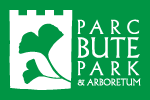The Animal Wall, Bute Park, Cardiff

The Animal Wall
Press play for RNIB audio presentation
Or, download mp3 (1.2MB)
A menagerie of stone animals watches you from the wall between the castle and West Lodge. This is the southern boundary of Bute Park.
The animals nearest the castle were carved by Thomas Nicholls, of Lambeth, London, in the early 1890s. The animals nearest West Lodge were carved in the early 1920s by Alexander Carrick, of Edinburgh. These sculptors used different styles. Can you tell where the original animals end and the newer ones begin? The answer is on the Footnotes page.
As you walk along the wall, try to identify each of the animals. The Footnotes page will tell you if you were right.
The original Animal Wall was designed by William Burges, architect to the Bute estate. William Frame, another Bute architect, oversaw the wall’s completion in 1892. The animals were painted in rich colours, which soon faded.
The Animal Wall originally stood in front of the castle’s clock tower and moat garden, immediately west of the castle entrance. It was relocated to its current position in 1922-23 to enable Duke Street to be widened. As part of this work, the wall was extended further west and the extra animals were carved.
In the 1930s the South Wales Echo and Evening Express published a series of stories about the imagined antics of the various animals on the wall. Written by Dorothy Howard Rowlands, the collected stories were later published in a booklet. A suggestion that the wall could be removed for another road widening provoked a public outcry in the 1970s.

Tom Clark repairing one of the animals
In 2010, Cardiff County Council restored the Animal Wall, with Heritage Lottery Funding. New stone was sourced to match the existing and carved to replace parts that had been lost over time. This included giving the anteater back his nose which had been broken off on more than one occasion. The whole wall was also cleaned and re-pointed in traditional lime mortar, which replaced a later phase of unsympathetic cement repairs. The photo shows carver Tom Clark, who made the replacement parts for the sculptures by working from old photographs.
By the way, the anteater’s known by some locals as the “Aardvark” – the name lends itself rather well to a strong Cardiff accent!
FOOTNOTES: Name those animals!
Thanks to RNIB for the audio presentation of this page
| To continue the Bute Park tour, go along Castle Street away from the castle and turn right into Bute Park at West Lodge |

